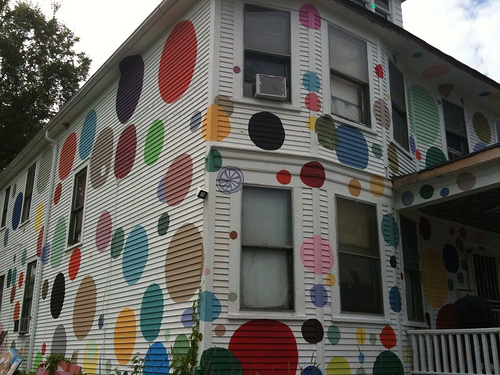Getting Creative With Exterior Paints

How to get a unique – but not crazy – exterior look
It’s happened to all of us: You walk down a street where there are lots of good-looking houses, and then all of a sudden you see one that just seems to stand out from the rest. It’s the same age and a similar style to its neighbours – and yet something is different. Chances are, it has a lot to do with the exterior paint, both the palette and the details.
So how do you use paint to make your house go from ‘good’ to ‘spectacular’? Here are some tips:
- Consider the neighbourhood. In San Francisco’s ‘painted ladies’ neighbourhood of Victorian homes, it’s not unusual to see several bright pastels used on every home, and the whole street is a rainbow of colour. On a mock-tudor in the suburbs, however, painting the stucco a bright pink is likely to draw negative attention.
- Historical exactitude. If your home is in an historical neighbourhood – or even if it’s just a unique architectural style like a Craftsman or Plantation – your best bet may be to go for a traditional look. Consult history books or your local paint expert for examples of how your home would have been painted during its ‘period’. (High-end paint suppliers may even be able to provide you with historically authentic colours and formulations.)
- Consider architectural features. A screened-in porch with gingerbread trim can look charming when painted a bright blue or green; a modern wood-treated deck tends to look better when it’s stained or painted a more natural colour.
- Size matters. On a small brownstone, painting the door a bright, high-gloss colour may be just the thing to provide a pop of interest. Using that colour for all the trim on a larger home may end up looking like a pre-schooler’s drawing. It’s important to know the difference between ‘detail’ and ‘disaster’.
- How will it look when it’s a bit weathered? A pink-toned taupe, for example, may look fantastic for the first few months, but after a year or two of harsh winters or a lot of rain, it may fade to an unappealing dirty pink. If you’re not prepared to have to power-wash your home’s exterior every month, give some thought to how the colours you want to use will fade and change over time.
- Make sure it matches. All brick is not created equal – there are many variations. Even the stardard ‘red brick’ can have an almost endless range of undertones from orange to crimson to purple. Before you choose a paint colour, check to make sure it harmonizes with whatever finish (brick, siding, stucco) makes up the bulk of your home’s exterior.
- Don’t rush. If you’ve just moved into your home, you may want to wait a year before doing anything radical with the exterior paint. Taking your time, and living with the house through all four seasons, will make it easier for you to make the right decision when it comes to a new paint scheme.
